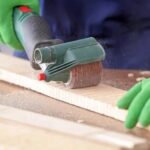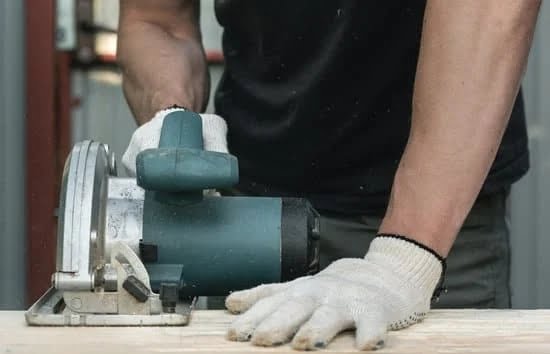Are you looking to improve your woodworking skills? If so, understanding how to use a scribe in woodworking is crucial. A scribe plays a significant role in achieving accurate and precise measurements, making it an essential tool for any woodworker. Whether you are a beginner or an experienced craftsman, mastering the use of a scribe can greatly enhance the quality of your woodworking projects.
Using a scribe in woodworking helps ensure that each measurement and marking is exact, ultimately leading to more precise cuts and seamless joinery. Understanding the importance of this tool can make a substantial difference in the outcome of your woodworking projects. With various types of scribes available in the market, it’s important to learn about their specific uses and how to choose the right one for your project.
In this article, we will explore the significance of using a scribe in woodworking and delve into different types of scribes commonly used by woodworkers. We will also provide valuable tips on choosing the right scribe for your project and offer guidance on proper handling and care of this essential tool.
Additionally, we will present a step-by-step guide on how to use a scribe in woodworking, advanced techniques, common mistakes to avoid, and expert tips from experienced woodworkers. So, let’s dive into the world of using a scribe in woodworking and master this essential skill.
Types of Scribes Used in Woodworking
Woodworkers rely on a variety of scribes to help them achieve precise and accurate measurements in their projects. Each type of scribe serves a specific purpose, and understanding the differences between them can significantly impact the quality of your woodworking. Some common types of scribes used in woodworking include marking gauges, panel gauges, and cutting gauges.
Marking gauges are among the most commonly used scribes in woodworking. They typically consist of a beam with a marking pin or wheel that can be adjusted to set the desired measurement. This type of scribe is ideal for creating straight and parallel lines on wood, making it essential for tasks such as laying out joints or marking for cuts.
Panel gauges, on the other hand, are designed specifically for marking large panels or boards. They feature a longer beam and often have multiple points or wheels for more accurate and consistent measurements across wider surfaces. Panel gauges are crucial for ensuring precision in projects such as cabinetmaking or furniture building where larger pieces of wood need to be marked.
Cutting gauges are used to create accurate lines on wood surfaces that will be cut using hand saws or chisels. This type of scribe typically has a single cutting point that scores the wood fibers to provide a clear and precise guide for cutting. Cutting gauges are essential for creating clean and accurate cuts in woodworking projects.
Understanding the different types of scribes available to woodworkers is essential for selecting the right tool for the job at hand. By choosing the appropriate scribe based on the specific requirements of your project, you can ensure that your measurements are accurate and your woodworking tasks are completed with precision. Knowing how to use a scribe in woodworking involves not only mastering its operation but also selecting the right type of scribe for each task at hand.
Choosing the Right Scribe for Your Project
When it comes to woodworking, choosing the right scribe for your project is crucial in achieving precision and accuracy. There are various factors to consider when selecting a scribe, such as material, design, and durability. By understanding the different types of scribes and their specific uses, woodworkers can make an informed decision on which scribe is best suited for their project.
Tips on Selecting the Appropriate Scribe
To choose the appropriate scribe for a woodworking task, it is important to consider the type of material you will be working with. For softer woods, such as pine or cedar, a pointed metal scribe may be more suitable. On the other hand, harder woods like oak or maple may require a diamond-tipped scribe for accurate markings.
Consider the design of the scribe as well. Some may have adjustable marking mechanisms that allow for different line widths, while others may have built-in levels for increased precision. Determine which features are essential for your specific project to ensure you select the right tool.
Durability is another factor to take into account when choosing a scribe. Look for a well-crafted and sturdy scribe that can withstand frequent use without compromising its accuracy. A durable scribing tool will not only ensure consistent results but also provide longevity in your woodworking arsenal.
By carefully considering these factors-material, design, and durability-woodworkers can confidently select the appropriate scribe for their woodworking tasks.
Proper Handling and Care of a Scribe
When it comes to using a scribe in woodworking, proper handling and care are essential to ensure its longevity and accuracy. A well-maintained scribe can make all the difference in achieving precise measurements and creating accurate cut lines. In this section, we will discuss the importance of handling and caring for your scribe, as well as provide instructions on how to maintain it for optimal performance.
Handling a Scribe
The first step in proper scribe care is to handle it with caution and care. When using a scribe, it’s important to avoid dropping or mishandling it, as this can cause damage to the tip or compromise its accuracy. Additionally, always store the scribe in a safe place when not in use to prevent any accidental damage.
Maintaining a Scribe
To ensure that your scribe maintains its sharpness and accuracy, regular maintenance is crucial. This includes keeping the tip of the scribe clean and free from any debris that could affect its precision. You can use a soft cloth to wipe down the tip after each use, ensuring that it remains sharp and ready for your next woodworking project.
Sharpening a Scribe
Over time, the tip of a scribe may become dull from frequent use. To maintain its sharpness, you can sharpen the tip using a fine-grit sharpening stone or fine sandpaper. Gently rub the tip against the stone or sandpaper at a consistent angle to restore its sharpness.
Remember to always test the scribe on scrap wood before using it on your actual project to ensure that it is properly sharpened. By following these simple care and maintenance practices, you can prolong the life of your scribe and continue to achieve precise measurements in your woodworking projects.
By learning how to properly handle and care for your scribes, you can maximize their utility in various woodworking tasks while ensuring accuracy and precision throughout each project”.
Step-by-Step Guide on How to Use a Scribe in Woodworking
Woodworking requires precision and accuracy, and one tool that is essential for achieving this is a scribe. A scribe is a simple yet versatile tool that helps woodworkers mark precise measurements on wood, transfer these measurements, and create accurate cut lines. Whether you are a beginner or an experienced woodworker, learning how to use a scribe properly is crucial for creating high-quality woodworking projects. Here is a step-by-step guide on how to use a scribe in woodworking:
1. Prepare Your Materials: Before using a scribe, ensure that you have the necessary materials ready. This includes the piece of wood you will be working on, the scribe itself, and any other tools such as a pencil or marking knife if needed.
2. Marking Measurements: To start, place the edge of the scribe against the wood and use it to mark your desired measurement by gently scoring the surface. Whether you are marking straight lines or curves, the scribe allows you to make precise markings without any guesswork.
3. Transferring Measurements: Once your measurements are marked on one piece of wood, you can then use the scribe to transfer those measurements onto another piece of wood. This is particularly useful when creating joints or matching pieces together in woodworking projects.
4. Creating Cut Lines: After transferring measurements, you can use the scribe to create accurate cut lines by scoring along the marked measurements with slight pressure. This provides a guide for sawing or cutting along the line with precision.
Mastering how to use a scribe in woodworking will greatly improve your ability to achieve precise measurements and accurate cuts in your projects. With practice and attention to detail, incorporating a scribe into your woodworking process can elevate the overall quality of your work.
Advanced Scribing Techniques for Woodworking Projects
When it comes to more intricate woodworking projects, advanced scribing techniques become essential for achieving precise and accurate results. One advanced technique is using a scribe for joinery, where wood pieces are meticulously fitted together without the use of nails or screws. By marking and transferring measurements with a scribe, woodworkers can create seamless joints that enhance the overall quality and aesthetics of their projects.
Another advanced scribing technique involves using a scribe for complex woodworking designs. Whether it’s creating intricate patterns or detailing on wood surfaces, a scribe allows for the accurate transfer of measurements onto the wood, ensuring that the design is executed with precision. This is particularly important for woodworking artisans who specialize in creating custom furniture, cabinetry, or decorative wooden elements.
To master these advanced scribing techniques, woodworkers should practice precision and patience. Using a sharp scribe is crucial when working on complex projects, as any inaccuracies can result in costly mistakes. Additionally, employing proper lighting and magnification tools can aid in ensuring that the markings made with a scribe are clear and consistently placed according to the design specifications.
| Woodworking Technique | Description |
|---|---|
| Joinery with Scribe | Create precise fittings without nails or screws |
| Complex Design Details | Accurately transfer intricate designs onto wood surfaces |
By incorporating these advanced scribing techniques into their woodworking repertoire, artisans can elevate the quality and craftsmanship of their projects while also honing their skills in precision woodworking. For those new to these techniques, seeking guidance from experienced woodworkers or taking specialized courses can provide valuable insights and hands-on training on how to effectively use a scribe for more complex woodworking tasks.
Common Mistakes to Avoid When Using a Scribe
Woodworking requires precision and accuracy, and the use of a scribe is essential in achieving this. However, there are common mistakes that woodworkers make when using a scribe, which can affect the quality of their work. By being aware of these mistakes and knowing how to avoid them, woodworkers can ensure that they make the most out of their scribing tool in their woodworking projects.
Here are some common mistakes to avoid when using a scribe in woodworking:
- Incorrect Holding Position: One common mistake is holding the scribe at the wrong angle or position, which can result in inaccurate markings on the wood. It is important to hold the scribe perpendicular to the surface of the wood and maintain a steady hand to create precise lines.
- Using Dull Blades: A dull blade on a scribe can lead to jagged or uneven markings on the wood. It is important to regularly sharpen the blade of your scribe to ensure clean and accurate lines.
- Applying Excessive Pressure: Pressing too hard with the scribe can cause it to dig into the wood, resulting in deeper markings than intended. It is important to apply gentle and consistent pressure when using a scribe for marking measurements.
By avoiding these common mistakes, woodworkers can ensure that they effectively use a scribe in their woodworking projects. Knowing how to use a scribe in woodworking effectively includes understanding these potential pitfalls and taking steps to mitigate them.
Additionally, seeking guidance from experienced woodworkers or attending workshops on woodworking techniques can provide valuable insights into using a scribe efficiently. Learning from others’ experiences and expertise can help woodworkers refine their skills in using a scribing tool for precise measurements and marking in woodworking projects.
Tips From Expert Woodworkers on Using a Scribe
Using a scribe in woodworking is an essential skill that can greatly improve the accuracy and precision of your projects. Expert woodworkers have honed their scribing techniques over the years, and they offer valuable tips for utilizing a scribe effectively. Whether you are a beginner or experienced woodworker, learning from these experts can help elevate your woodworking skills to the next level.
One key piece of advice from seasoned woodworkers on how to use a scribe in woodworking is to choose the right type of scribe for the specific task at hand. Different types of scribes, such as marking gauges, cutting gauges, and mortise gauges, each serve distinct purposes in woodworking. Understanding when and how to use each type of scribe will ensure that you achieve accurate and consistent measurements in your projects.
In addition to selecting the appropriate scribe for a given task, expert woodworkers emphasize the importance of proper handling and care of a scribe. Maintaining a sharp point and clean edges on your scribe is crucial for achieving precise markings on wood. Regular sharpening and cleaning routines should be incorporated into your woodworking practices to ensure that your scribe performs optimally.
Furthermore, expert woodworkers stress the significance of practicing advanced scribing techniques for more intricate woodworking projects. Utilizing a scribe for joinery and complex designs requires a steady hand and an understanding of how to manipulate the tool effectively. By mastering these advanced techniques, you can expand your capabilities as a woodworker and execute more sophisticated projects with precision.
| Expert Tips | Expert Recommendations |
|---|---|
| Choose the right type of scribe for each task | Selecting the appropriate tool for precise markings |
| Properly handle and maintain your scribe | Maintain sharpness and cleanliness for accurate results |
| Practice advanced scribing techniques | Master more intricate designs with precision |
Conclusion
In conclusion, mastering the skill of using a scribe in woodworking is essential for achieving precise and accurate measurements, which are crucial for successful woodworking projects. A scribe not only helps in marking precise measurements on wood but also assists in transferring these measurements and creating accurate cut lines.
By understanding the different types of scribes used in woodworking and choosing the right one for each project, woodworkers can ensure that they have the appropriate tool for the task at hand. Additionally, proper handling and care of a scribe are vital to maintain its longevity and accuracy, including sharpening and cleaning it regularly.
Ultimately, by following a step-by-step guide on how to use a scribe and learning advanced techniques, woodworkers can expand their skill set and tackle more intricate woodworking projects with confidence. Avoiding common mistakes when using a scribe and taking advice from expert woodworkers can also contribute to mastering this important skill. In summary, utilizing a scribe effectively is an indispensable aspect of woodworking that can significantly enhance the precision and quality of finished projects.
Frequently Asked Questions
How Do You Use a Wood Scribe?
A wood scribe is typically used to accurately mark and measure wood for precise cuts or fittings. It is often used in cabinetry, carpentry, and woodworking to ensure accurate and clean lines on the wood.
What Is the Best Tool to Scribe Wood?
The best tool to scribe wood is typically a marking knife or a pencil. A marking knife allows for more precise marking and scoring of the wood, while a pencil is versatile and can easily be erased if needed. Ultimately, the best tool depends on personal preference and the specific woodworking task at hand.
How Does a Scribe Work?
A scribe works by allowing the user to make accurate and consistent markings on wood surfaces. It typically has an adjustable point that can be set to a specific measurement, allowing for consistent marks along the length of a piece of wood. This ensures precision in woodworking projects and helps achieve clean, accurate cuts or joints.

Hi everyone! I’m a woodworker and blogger, and this is my woodworking blog. In my blog, I share tips and tricks for woodworkers of all skill levels, as well as project ideas that you can try yourself.





